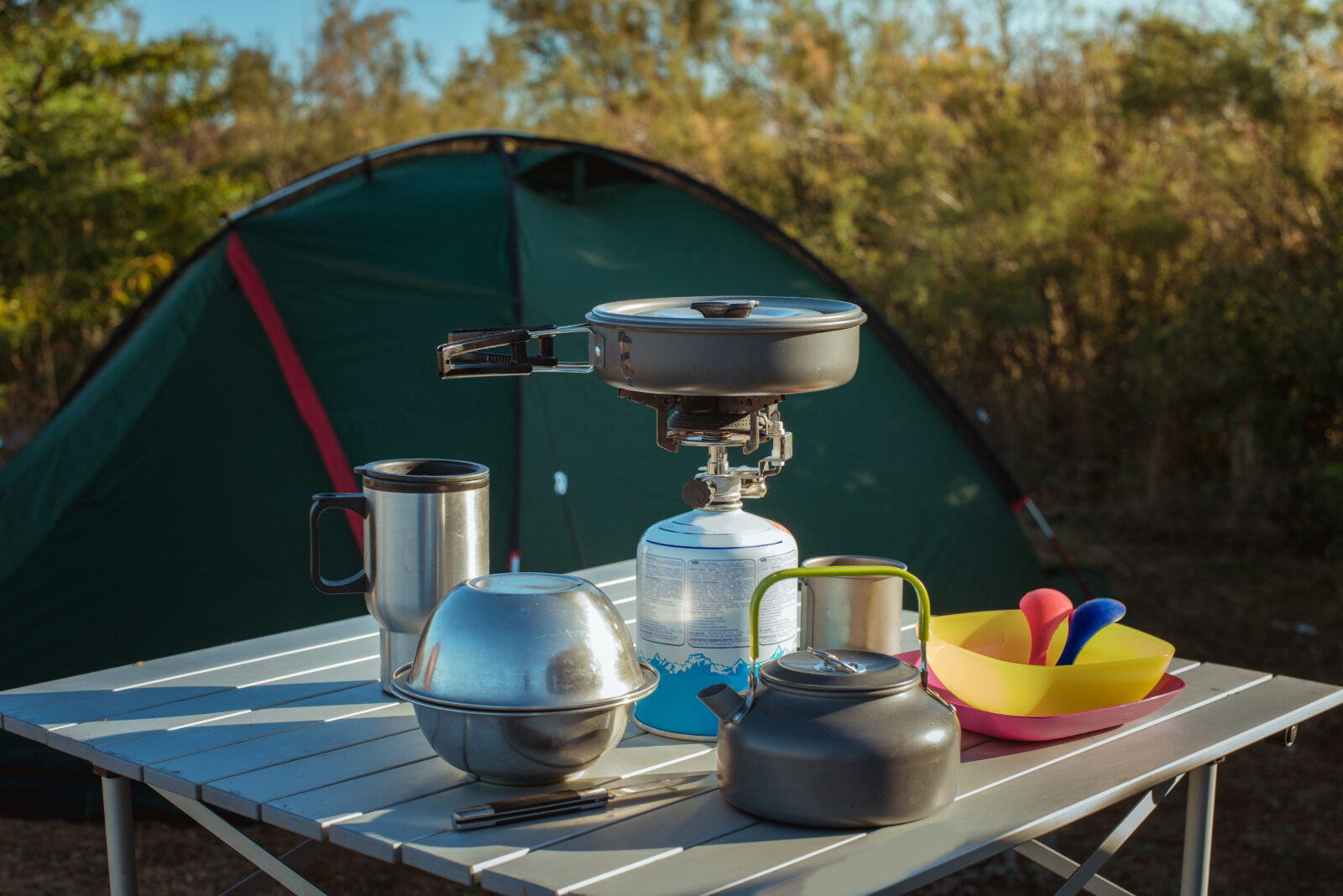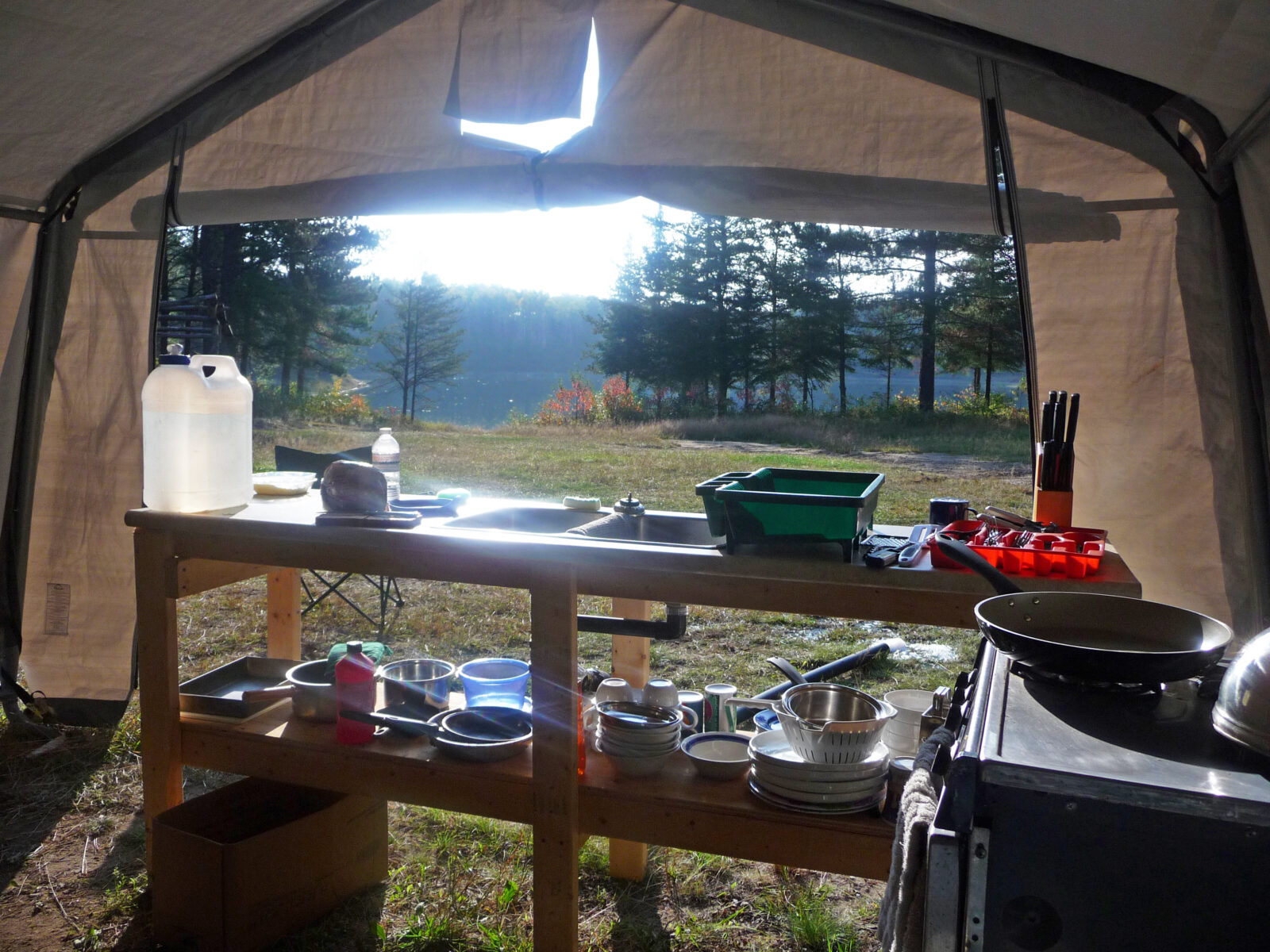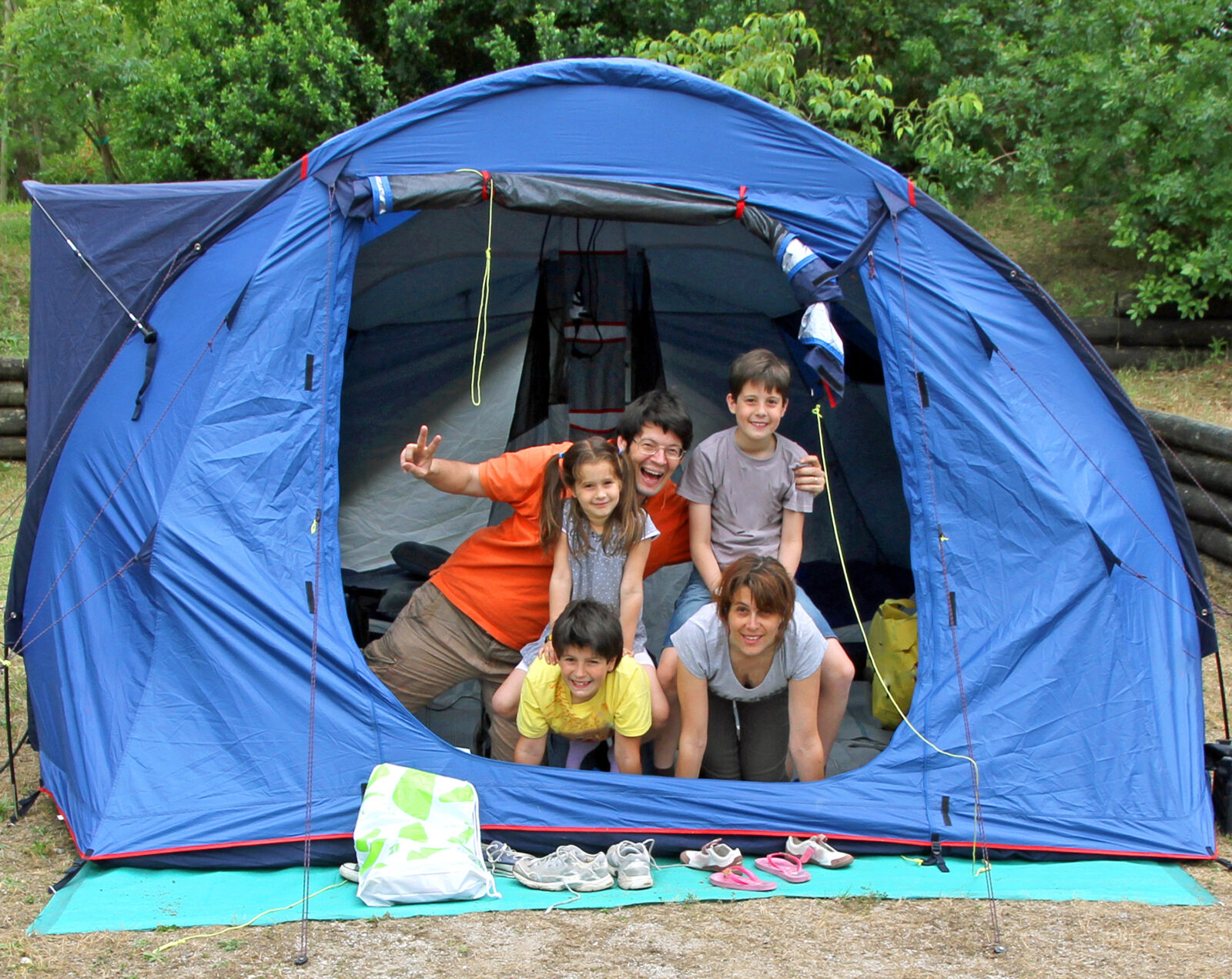Searching for used camping gear but not sure if it’s a good idea?
You’re not alone.
While buying used camping equipment can be a great way to save money, it can also get quite complicated because it’s hard to know when you’re truly getting a good deal.
Whether you’re looking to save on a big-ticket item like a 2 person tent for your trip to Yosemite National Park, or you simply want to go eco-friendly by buying used gear, we have all the advice you need to get started.
Up next, we’ll introduce you to some of our top tips for purchasing second-hand camping gear with confidence.
Page Contents
Why buy used gear?

If you’re reading this article, you’re probably already considering buying some used gear for your next camping adventure.
But, is buying used equipment really a good idea?
Well, while purchasing used gear isn’t great in every situation (more on that in a bit), there are some key advantages to opting for second-hand clothing and equipment. Here are some of the primary benefits of used camping gear:
Cost savings
Most folks who choose to purchase used camping gear do so for cost savings. Indeed, depending on what you buy, you may find that you save up to 75% on the sticker price of an item by purchasing it used.
Of course, these dirt-cheap deals can be hard to come by, especially if you are looking for a like-new piece of gear. But, you’ll almost certainly save money by purchasing a used summer sleeping bag rather than a brand-new one.
Eco-friendliness
In addition to cost savings, used gear purchases are also good for the environment. Although we don’t often like to talk about it, producing outdoor equipment does have a major impact on our planet.
For example, the WWF estimates that it takes about 700 gallons (2,700 liters) of water to produce a single cotton t-shirt. Sure, we don’t generally wear cotton t-shirts while hiking, but the environmental impact of producing a single piece of gear is much larger than we might think.
Compound that with the fact that most outdoor gear is made from synthetic materials like nylon, polyester, and spandex – all of which are derived from oil – and the carbon footprint of outdoor equipment definitely isn’t something to scoff at.
Of course, buying used gear isn’t going to change the world on its own. But, opting for second-hand gear when possible can make a difference in the long-term by reducing the carbon footprint of your equipment.
Limited break-in period
Finally, one of the lesser-known benefits of buying used gear is the fact that it often already comes broken-in. This means that purchasing a second-hand hiking backpack or hiking boots for your trip to Zion National Park could greatly reduce your gear’s break-in period.
In fact, you’ll often find that it only takes a couple of days to break in a used pair of hiking shoes. That’s a far cry from the 2 to 3 weeks that it can take to break in a set of new leather boots. What more could you ask for?
Where to find used camping gear?
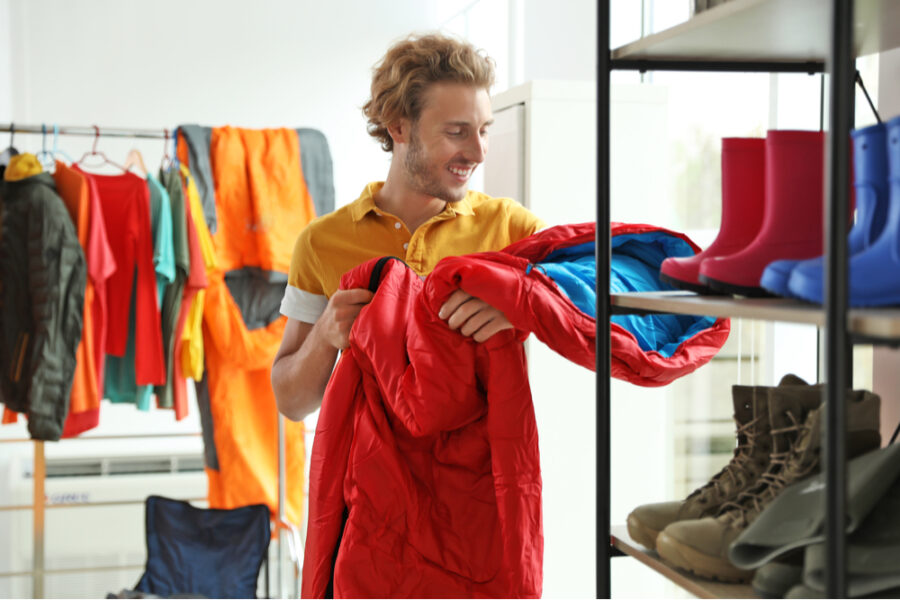
Once you decide whether used gear is right for your needs, it’s time to actually start shopping for your equipment. Doing so starts with knowing where to find used camping gear.
So, here are some of the best places to shop for second-hand camping equipment :
- eBay. You can buy pretty much anything on eBay, and used camping gear is no exception. Some small retail stores will often list consignment gear on eBay, too, so it’s a nice place to start your used equipment search.
- Local listings & Facebook marketplace. If you’re not interested in paying for shipping, local listings on Facebook Marketplace, Craigslist, and other similar sites are always a potential place to shop for gear.
- Thrift stores. Depending on where you live, thrift stores can often be a good place to find second-hand outdoor gear. This is more likely in a popular outdoor recreation destination, but you’d be surprised at what you’ll find at your local thrift store.
- Outdoor retailers. Many outdoor retailers, whether big, small, online, or brick-and-mortar, now offer some sort of used gear selection for campers to choose from. Some stores will also offer consignment options, too, so you can sell your used gear.
- Gear manufacturers. These days, many gear manufacturers, like Patagonia, run their own online second-hand stores. Most of these companies will repair used gear in their listings, too, so they’re a nice place to shop if you want to be sure that you’re buying quality, authentic equipment.
What to check before buying?
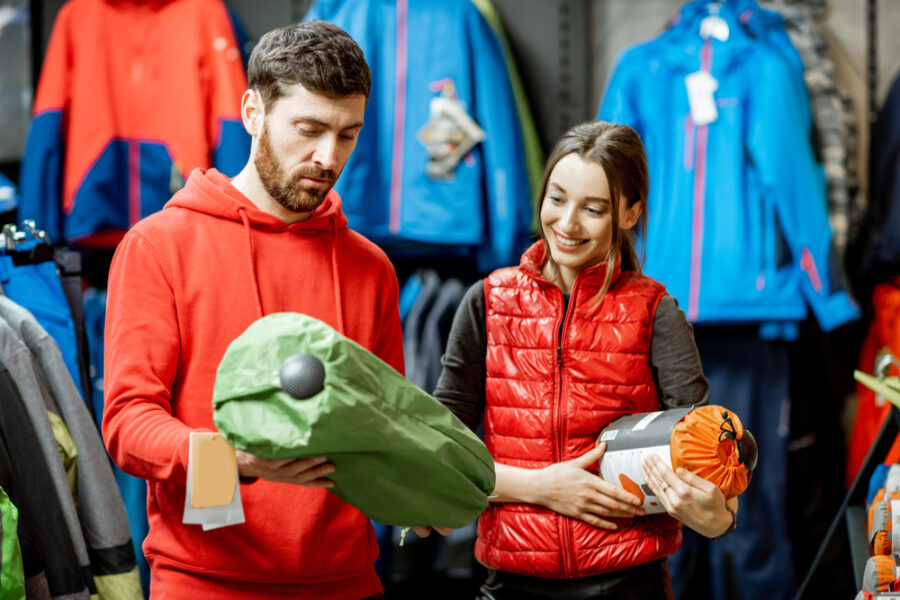
If you’re going to buy used gear, you have to be an astute shopper. While a bit of internet research or a well-written buyer’s guide can go a long way toward helping you purchase the right camping gear, shopping for used gear is a challenge unto itself.
Indeed, when shopping for used equipment, you’ll have to understand :
- The specific features of the gear that you’re buying.
- How to assess whether something is in good working condition.
- When a bit of damage is okay in used gear.
So, here are some tips for assessing wear and tear on used gear before you buy.
Check for missing parts
Some pieces of equipment, like camping chairs, tables, and 4 person tents, are somewhat useless if they’re missing an important part, like a tent pole.
Therefore, it’s essential that you check to ensure that any piece of camping gear that you buy has all of its required parts before you finalize your transaction.
Of course, some people are upfront about the fact that their used gear is missing a certain part. In these situations, you can often negotiate your way to a lower price with the knowledge that you can order a spare part from the manufacturer.
But, you definitely want to know if your gear is missing any parts before you buy.
Don’t worry too much about small rips and tears
Most used outdoor gear is dirty and slightly ripped. If you spend time outside, you know that it’s more or less impossible to avoid tiny tears and dirt stains on your equipment.
Therefore, small tears in most pieces of gear aren’t anything to worry about. If you have some sewing skills and a bit of gear repair tape, you can often fix these issues with relative ease.
However, things like massive rips in a tent fly or inflatable sleeping pads that are full of holes require some careful consideration. If repairing this sort of damage isn’t something that you’re comfortable with, it’s probably best to look elsewhere for your used gear.
Always do a smell test
It might sound weird to go around sniffing used gear in a store, but we can assure you that you don’t want to buy weird-smelling gear.
Although some funky scents in gear like a hiking rain jacket can be dealt with in the wash, other smells could be a sign of mildew. In these situations, even the most high-tech of washing machines can’t save gear from the landfill, so you’d be better off not buying the item.
Ultimately, if a piece of gear smells repulsive, why would you buy it?
Is the warranty still valid?
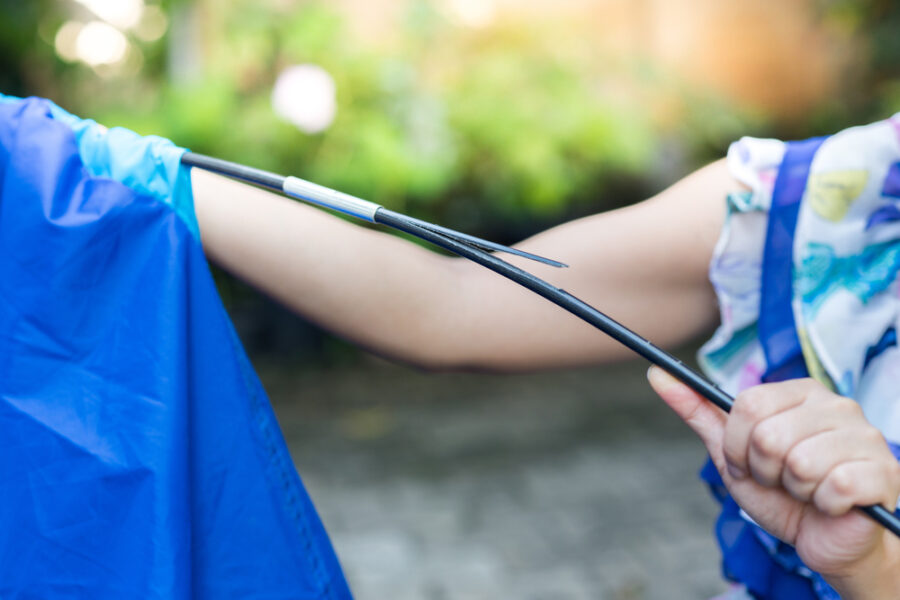
More often than not, when you buy a piece of outdoor gear or clothing, your new item will be covered under a manufacturer’s warranty. However, there’s no such thing as a no-strings-attached warranty, no matter how much a company might like to tout their so-called lifetime guarantee.
In reality, most companies place a time limit on their warranties. For example, if you buy a new pair of trekking poles for your Appalachian Trail thru-hike, they might only be under warranty for 2 years.
Therefore, buying a pair of used trekking poles can put you in a tricky situation should a warranty issue arise. Generally speaking, even if you’ve only had the gear for a couple of months, an item is only under warranty for a set period of time from the original date of purchase.
Furthermore, even if your gear doesn’t have a set warranty expiration date, the warranty coverage on your item might not be transferable to the second owner. In fact, many warranties are voided if you’re not the original owner of the item.
Unfortunately, it’s impossible to give universal guidance as to what gear will still be under warranty, even when it’s purchased used. Since warranties vary from manufacturer to manufacturer, we recommend checking in with the company’s warranty policy before you buy second-hand.
Gear to avoid buying used
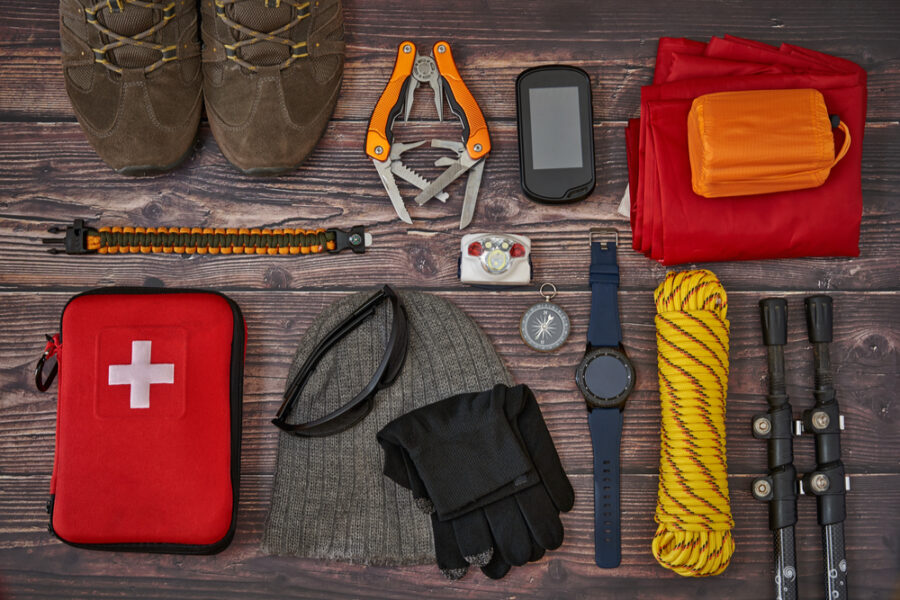
Although buying used gear can be a great way to save money and help the environment, there are some items that aren’t worth buying used. These include:
- Safety equipment. As a general rule, anything that’s designed to be used for safety, like helmets, lifejackets, harnesses, and the like shouldn’t be purchased used. In situations like this, you don’t want to risk buying damaged equipment. Of course, this is more relevant to activities like climbing and paddling, but we’d also include first aid kits in the realm of safety equipment, too.
- Electronics. While electronic pieces of gear might be really expensive, it’s usually not worth buying them used. Unless you know the person that you’re buying from or you’re buying from a reputable store, purchasing a used GPS hiking watch, solar panel, walkie-talkie, or the like can be a recipe for disaster. In reality, it’s hard to assess the condition of this type of equipment from a Craigslist posting.
- Hiking underwear. Buying underwear used is usually not a good idea, and the same can be said about hiking underwear. Simply put, buying used underwear is a hygiene issue, so it’s not recommended. We’d also include hiking socks in this category, too. That’s because hiking socks, while sometimes pricy, tend to wear out fairly quickly. So, you won’t save much money by purchasing second-hand.
Recommended Reads :
Gaby Pilson
Gaby is a professional mountain guide with a master’s degree in outdoor education. She works primarily in the polar regions as an expedition guide, though she can be found hiking, climbing, skiing, sailing, or paddling in some of the world’s most amazing places when not at work.
